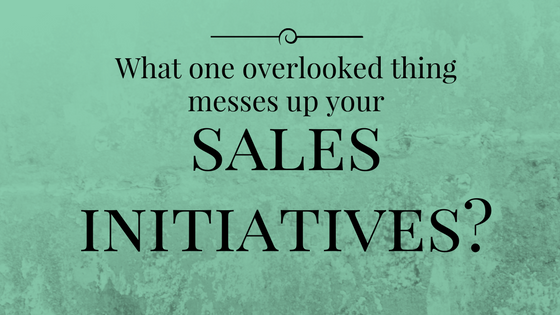Are your sales initiatives a failure? Do your marketing programs not drive the revenue that you think they should? Are the hot leads from sales initiatives that you pass to sales not turning into a qualified pipeline? Well, you are probably doing one simple thing wrong – sales feedback.
Of course, right now you are saying to yourself, I talked to our head of sales or sales ops and they thought my sales initiative or marketing program was great! Is talking to the head of sales enough?
A disconnect between sales and sales management exists in almost every organization, especially large sales orgs. While sales leaders have a good view of their sales organization, they don’t have the feet on the street talking to customers or prospects every day, or in transactional deals.
Sales leaders may be involved in sales calls, but they aren’t the everyday variety. You bring them in to close the big deals or get coaching, but not for the run of the mill sales call. In addition, it’s pretty easy for a sales leader to draw conclusions from anecdotal evidence. Same is true for sales ops, they aren’t there with the customers!
A key ingredient to any sales or marketing program is direct feedback, before, during and after the program. It’s not sufficient to do it at just one point, as things can evolve quickly for sales reps as they use materials. Ideally you gather a mix of qualitative and quantitative feedback.
How to gather feedback for sales initiatives
Individual Sales Reps interviews
Talk to a variety of reps, those that over perform and those that are about average. Review the sales initiative, your bill of materials, your assets to create along with the nature of the program and get their feedback. You can’t just do one or two reps though, do quite a few. Doing this before you launch a program and in the middle is a good way to get a feel for the concept.
Focus Groups
Get 8-10 reps in a room (or on the phone) to discuss the program. Show them assets, cover the program and get their feedback. Do this before you launch any program, along with making sure to do this after a program – success or failure. Try to determine what works for them, and what does not.
Rep Shadowing
This is a bit more of a commitment but definitely worthwhile. Follow a rep around for a day and watch how they work, and how they use assets, in the process befriend them and try to pry out what really works. Often times marketing is pulled into big deals to help close the deal, but fail to get engage on smaller or less strategic deals. These transactional deals are what marketing or sales programs can influence, so understanding how things actually work is paramount. This is a great activity for a junior marketer, it will be an eye-opening experience.
Surveys
If your sales org is over 100 people then a survey provides a different type of insight, don’t do it for one program but instead look at several go-to-market initiatives. And use this survey as an opportunity to look at processes and tools sales reps use. They might have strong opinions on these concepts that don’t come out when asking about a specific asset. Take the time to read up on how to phrase questions.
Create a Report
Once your program is complete, take the feedback gathered and combine with the success of the program and overall asset feedback to create a report. Share that report with your management and sales management. Your manager, your peers and sales management tend to like this type of feedback; marketing professionals often overlook the feedback stage in a quest to create that next program and fill the funnel. But your funnel will be worthless if you aren’t understanding what works and what doesn’t.
Things to watch out for
Now, this process is pretty straightforward but several pitfalls emerge when dealing with gathering feedback for sales initiatives.
- Confirmation bias – Most marketers possess an emotional attachment to their sales programs. They might interpret any evidence as their assets are wonderful, when in fact, they are not. How do you address? The person that does the sales feedback should not be part of the generation of the program.
- Presenting non-statistically significant data as statistically significant. This topic requires more space than this blog entry allows. Make sure if you cite any quantitative data in your report that you are clear on the sample size.
- Only talking to the best reps. There are some reps that kill it, and will kill it regardless of what marketing provides. While getting their input is useful for any program, don’t rely exclusively on them. Instead, talk to reps that barely meet their quota (or miss it). These are the reps whose behavior you can change, so getting their feedback is essential.
There are bonuses in this for you!
First off, this type of engagement tends to broaden your exposure to sales. By cultivating relationships with reps when reviewing your sales initiatives, your job will be easier. You will be able to pick up the phone and call a rep, get their feedback on something specific quickly and easily. Second off, if the average rep knows you, you can parlay that into sales management knowing you. Oh, and your boss will probably pick up on sales knowing you. Being the top liaison to sales will be nothing but good for your career.


3 thoughts on “What one overlooked thing messes up your sales initiatives?”